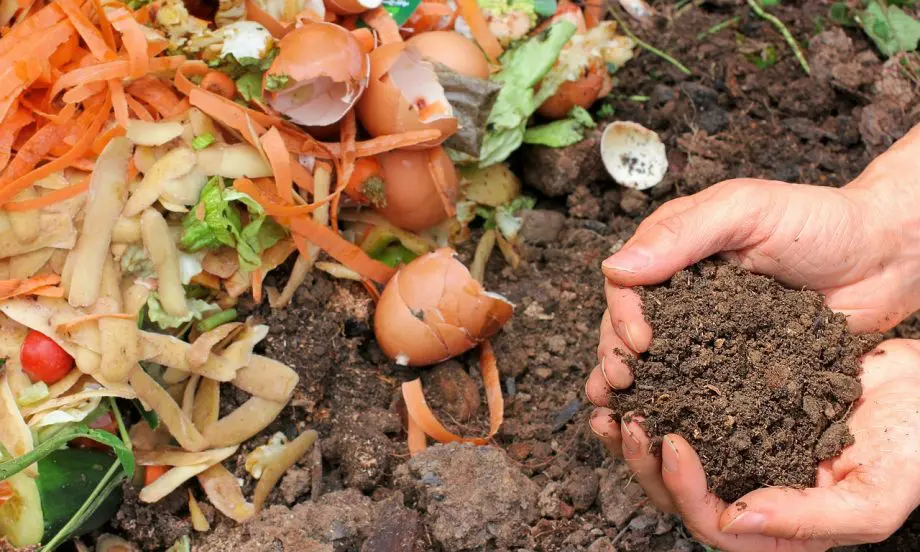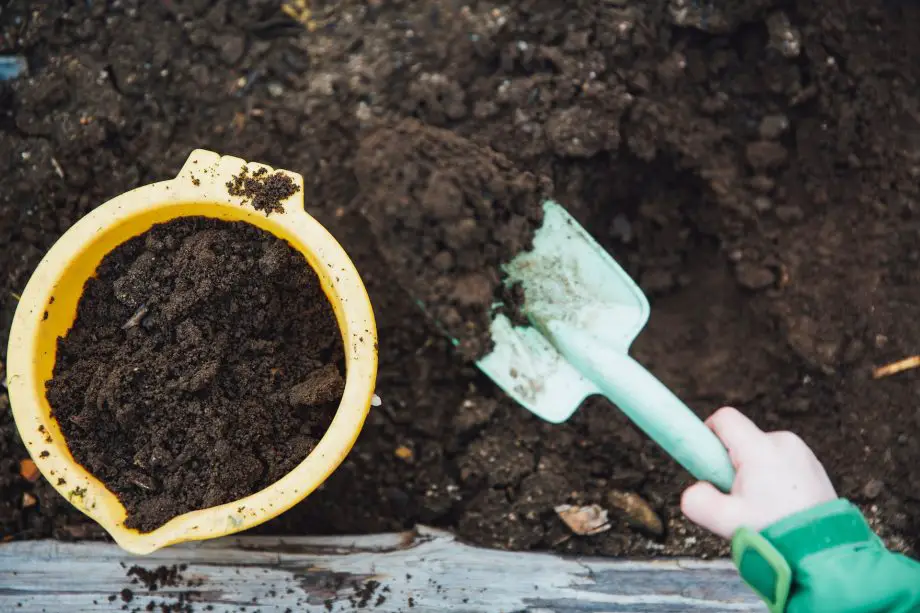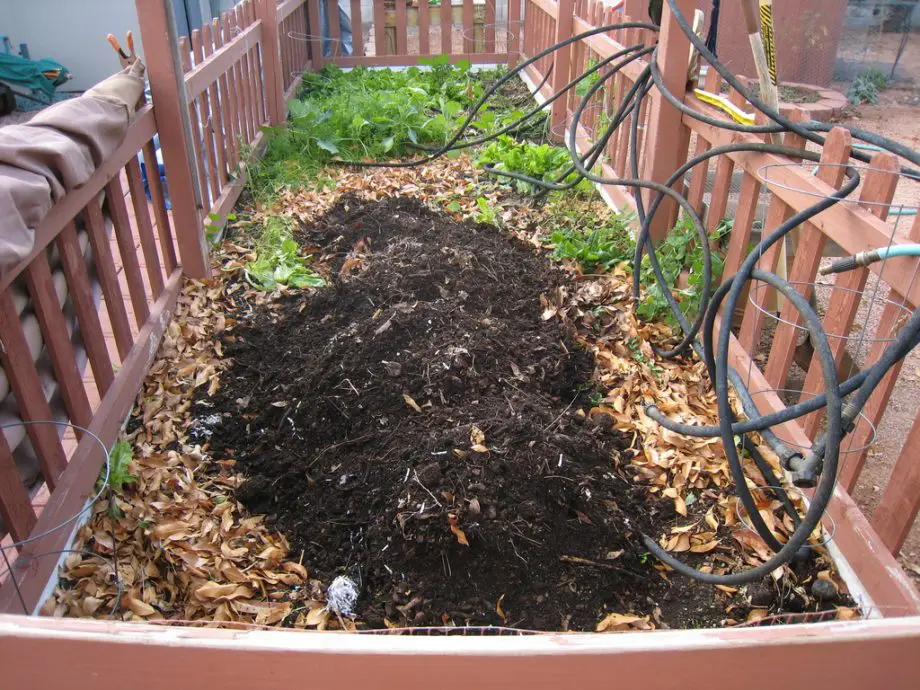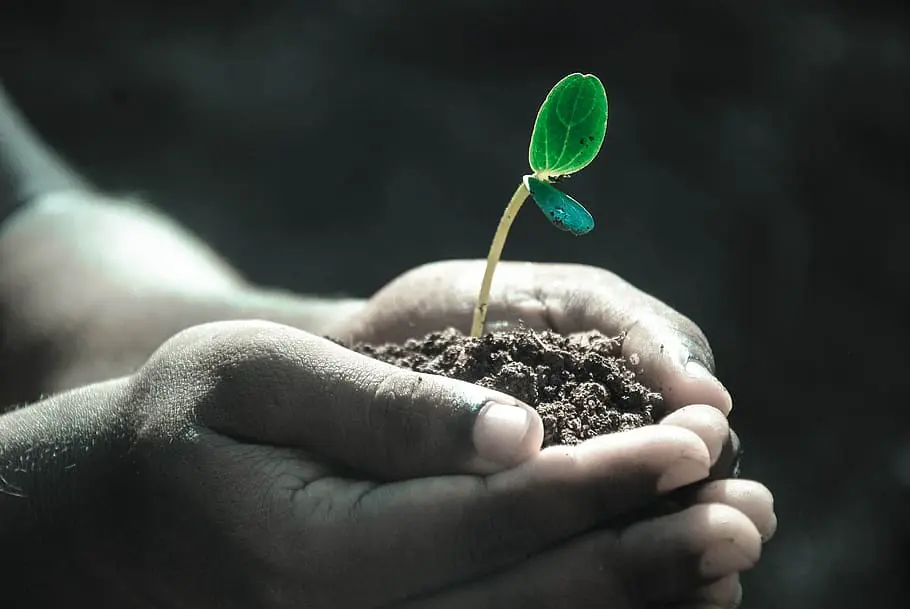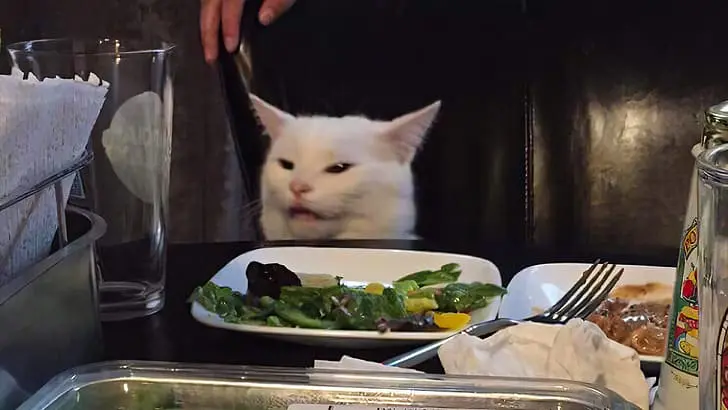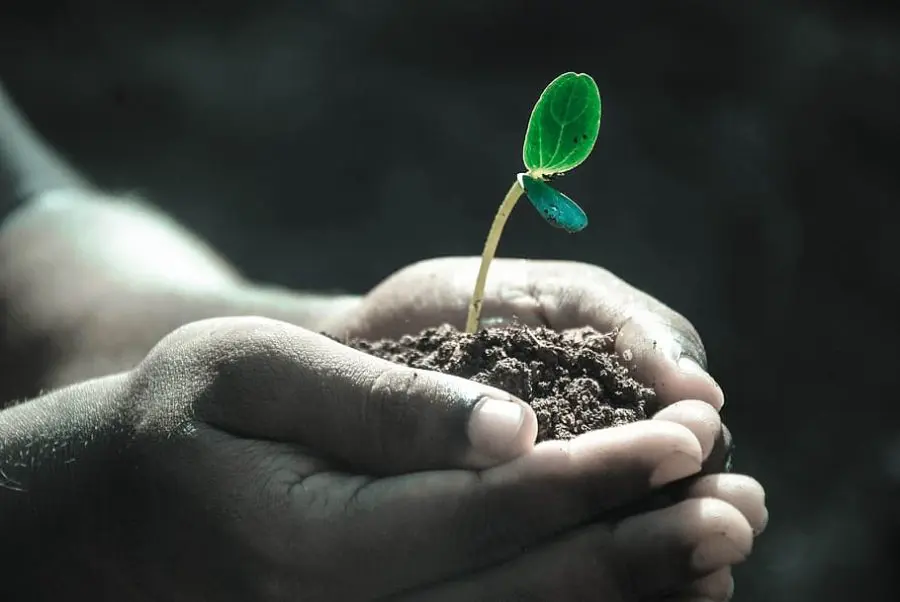
Unearth the secrets of transforming kitchen scraps into garden gold with Composting 101: What Can Be Composted? Join us on this green journey!
Ever wondered how to turn your kitchen scraps into something truly valuable? Well, you’re in the right place!
Welcome to Composting 101: What Can Be Composted? where we’ll guide you through the fascinating process of composting.
From banana peels to coffee grounds, you’ll be amazed at what can be transformed into nutrient-rich compost for your garden.
So, let’s dive in and start our green journey together!
Composting 101: What Can Be Composted?
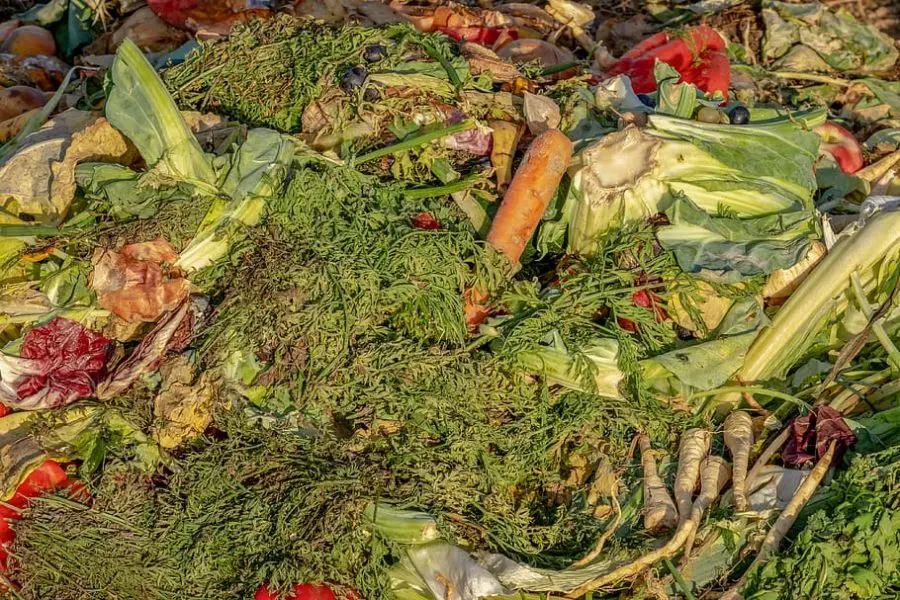
Welcome to the start of our green journey into composting 101 where we answer the question of what can be composted.
In this post, we’ll explore the ins and outs of composting, a simple yet powerful way to reduce waste and enrich our gardens.
We’ll cover everything from the basics of what composting is, to the surprising list of items you can compost, and even some common misconceptions.
By the end, you’ll be well-equipped to start your own compost pile and contribute to a healthier planet. So, let’s get started, shall we?
Definition of Composting
Let’s start with the basics, shall we? Composting, in its simplest form, is a natural process that transforms organic material like kitchen scraps and yard waste into a nutrient-rich soil conditioner.
Think of it as nature’s way of recycling! When you compost, you’re essentially speeding up the decomposition process, turning waste into a valuable resource.
It’s a bit like cooking, but instead of creating a meal, you’re creating a feast for your plants!
Importance of Composting
Now, you might be wondering, Why should I compost? Well, there are several compelling reasons.
Firstly, composting reduces the amount of waste that ends up in landfills.
Did you know that about 30% of what we throw away could be composted instead?
That’s a lot of waste that could be put to good use!
Secondly, composting enriches the soil in our gardens. It adds nutrients, improves soil structure, and helps retain moisture.
This means healthier plants and a more vibrant garden.
Lastly, composting helps combat climate change. When organic waste decomposes in a landfill, it produces methane, a potent greenhouse gas.
Composting, on the other hand, produces far less methane, making it a more environmentally friendly option.
So, in a nutshell, composting is not just good for your garden but it’s good for the planet too!
What is Composting?
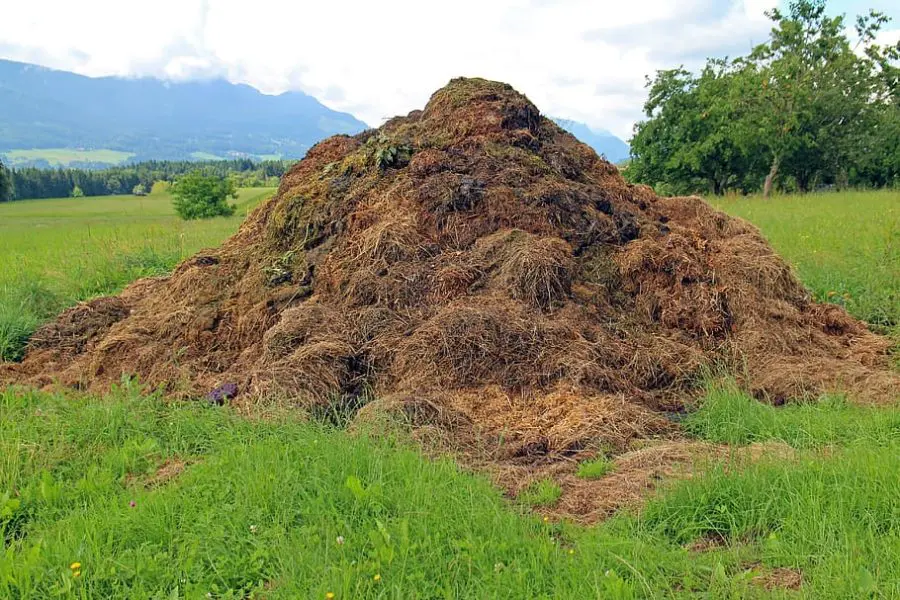
Alright, let’s dive a bit deeper into the world of composting. What exactly is it?
Well, composting is like running a small-scale recycling plant right in your backyard.
It’s a natural process where organic materials like fruit peels, vegetable scraps, coffee grounds, and yard waste break down over time.
This process is carried out by millions of tiny decomposers (think bacteria, fungi, and worms) that munch away on this waste, transforming it into a rich, dark, crumbly substance often referred to as black gold.
This gold is a powerhouse of nutrients, making it a fantastic, all-natural fertilizer for your garden.
So, in essence, composting is nature’s way of recycling organic waste into something incredibly useful. How cool is that?
The Composting Process
Let’s get into the nitty-gritty of the composting process. Imagine you’re a chef, but instead of cooking up a meal, you’re cooking up some nutrient-rich compost.
You start by gathering your ingredients, which are your green and brown organic waste.
Greens are things like vegetable scraps, coffee grounds, and fresh grass clippings, which provide nitrogen.
Browns are items like dried leaves, straw, and paper, which provide carbon.
You mix these ingredients together in your compost bin or pile, making sure to keep it moist but not soggy.
Over time, those tiny decomposers we talked about earlier get to work, breaking down the materials.
You can help them along by turning the compost pile every few weeks to keep it aerated.
After a few months, voila! You’ve got yourself a batch of compost ready to enrich your garden.
Benefits of Composting
Now, why go through all this effort? Well, composting has a host of benefits.
For starters, it’s a fantastic way to reduce the amount of waste you send to the landfill.
As mentioned about 30% of what we throw away could be composted instead. That’s a significant reduction in waste!
But the benefits don’t stop there. Compost improves soil health, helping plants grow stronger and healthier.
It improves soil structure, increases its ability to retain water, and can even help prevent plant diseases.
Plus, it’s a free source of high-quality fertilizer, saving you money on garden supplies.
And let’s not forget the environmental benefits. Composting reduces the need for chemical fertilizers, which can harm our waterways.
It also helps combat climate change by reducing methane emissions from landfills.
So, by composting, you’re not just helping your garden. You’re helping the planet too!
How to Start Composting at Home

Alright, now that we’ve covered what composting is and why it’s so fantastic, you’re probably eager to get started.
And that’s exactly what we’re going to dive into next. In this section, we’ll guide you through the simple steps to start composting right at your own home.
Whether you have a sprawling backyard or a tiny apartment, we’ll show you how you can turn your everyday waste into black gold for your plants.
So, let’s roll up our sleeves and get started with How to Start Composting at Home.
Choosing a Compost Bin
First things first, you’re going to need a compost bin. But don’t worry, choosing one isn’t as daunting as it might seem.
There are plenty of options out there, from simple plastic bins to fancy tumblers.
The key is to find one that suits your needs and space. Consider the size of your household, the amount of organic waste you produce, and how much space you have.
Remember, it’s not about having the fanciest bin, but the one that works best for you.
Location for Composting
Next up, let’s talk about where to place your compost bin. If you have a garden, a shady spot that’s easy to access would be ideal.
But if you’re an apartment dweller, don’t worry! You can still compost.
A small bin in your kitchen or balcony can do the trick. The most important thing is to choose a location that’s convenient for you, so that adding to your compost bin becomes a seamless part of your routine.
Basic Rules of Composting
Now, onto the nitty-gritty: the basic rules of composting. Think of your compost pile as a vegetarian meal for microorganisms.
It should be a balanced mix of ‘greens’ (like vegetable scraps and coffee grounds) and ‘browns’ (like dried leaves and paper), with a bit of water to keep things moist.
Avoid adding meat, dairy, or diseased plants, as these can attract pests or create unpleasant odors.
And remember, composting is more art than science, so don’t be afraid to experiment and see what works best for you.
What Can Be Composted?
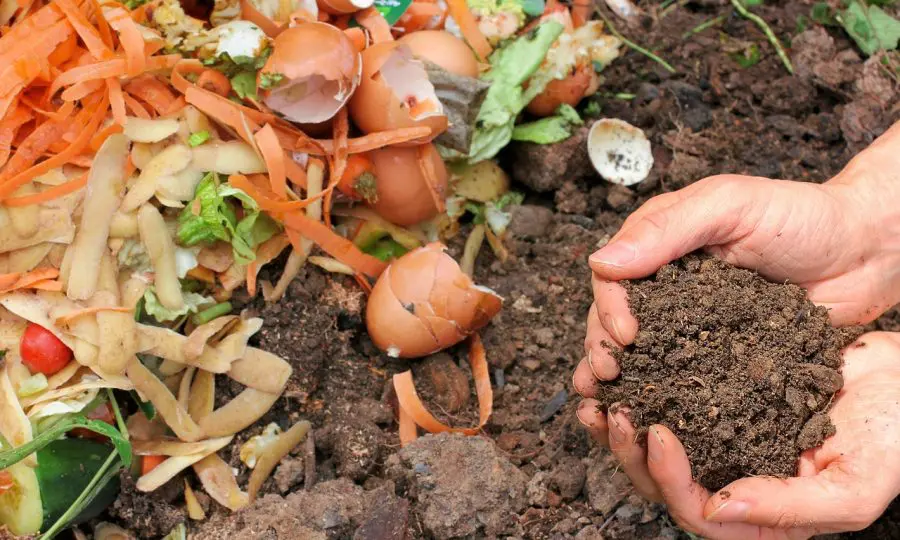
Alright, now that we’ve got the basics down, let’s dive into the fun part: what can be composted?
You might be surprised by the variety of everyday items that can be transformed into nutrient-rich compost.
From your morning coffee grounds to the leaves falling in your backyard, there’s a whole world of compostable materials waiting to be discovered.
In this section, we’ll explore the wide range of items that can go into your compost bin, and provide some handy tips to ensure your composting journey is a successful one. So, let’s get started!
Green Materials
Let’s start with green materials. No, we’re not talking about the color (although many of them are indeed green).
In composting lingo, ‘green’ refers to materials that are rich in nitrogen. These are the fresh and moist stuff like fruit and vegetable scraps, coffee grounds, fresh grass clippings, and even your old houseplants.
They’re the powerhouses of your compost pile, providing the essential nutrients that help speed up the decomposition process.
Brown Materials
Next up, we have the brown materials. These are your carbon-rich materials, and they’re just as important as the greens.
Think of things like dried leaves, straw, paper, and wood chips. They might not seem as exciting as the greens, but they play a crucial role in creating a balanced compost pile.
They provide the ‘bulk’ that allows air to circulate and keeps your compost pile from becoming a soggy mess.
Balanced Composting
Now, onto the art of balancing your compost. It’s not just about throwing everything in and hoping for the best.
A successful compost pile needs a good mix of both green and brown materials. The ideal ratio is about 2:1, brown to green.
This balance ensures your compost pile has the right mix of nitrogen and carbon, moisture and dryness, and it will decompose at just the right pace.
Remember, composting is a bit like cooking – it’s all about finding the right recipe!
What Cannot Be Composted?
Alright, we’ve had a great chat about all the things that can go into your compost pile, but now let’s switch gears a bit.
In this section, we’re going to talk about what cannot be composted. Yes, as much as we’d love to toss everything into the compost bin and call it a day, there are certain items that just don’t make the cut.
They can slow down the composting process, create unpleasant odors, or even attract pests. So, let’s dive in and learn about the no-go items in the composting world, shall we?
Harmful Materials
Let’s start with the harmful materials. Now, when we say ‘harmful’, we’re talking about things that can negatively impact the composting process or even the health of your garden.
These include certain types of plants, like those with diseases or pests, and also synthetic chemicals.
You might be surprised to learn that even some natural materials, like pet waste or certain types of wood, can be harmful in a compost pile.
They can introduce pathogens or toxins that you definitely don’t want in your garden.
So, remember, not everything natural is compost-friendly!
Why Certain Items Shouldn’t Be Composted
Now, you might be wondering, why can’t we compost certain items? Well, there are a few reasons.
Some materials, like plastics or metals, simply don’t break down in a compost pile.
Others might decompose, but they release substances that can harm your plants or upset the balance of your compost.
For example, meat and dairy products can attract pests and create unpleasant odors.
And certain plants, like black walnut, release substances that can inhibit plant growth.
So, while it might seem like a bummer to have to leave some things out of your compost, remember that it’s all in the name of creating the best possible soil for your garden!
Composting Methods
Alright, now that we’ve got a good grasp on what can and can’t go into our compost pile, let’s dive into the different methods of composting.
Yes, you heard it right! Composting isn’t a one-size-fits-all process. Depending on your space, time, and resources, you might find one method more appealing than another.
In this section, we’ll explore traditional composting, vermicomposting (that’s composting with worms!), and bokashi, a Japanese method that’s gaining popularity worldwide.
So, buckle up and get ready to find the composting method that fits your lifestyle like a glove!
Hot Composting
Let’s kick things off with hot composting, a method that’s as fiery as it sounds!
Hot composting is the speed demon of the composting world. It’s a fast-paced process that can turn your kitchen scraps and yard waste into nutrient-rich compost in as little as 6 weeks.
But, it’s not all sunshine and roses. Hot composting requires a bit of elbow grease.
You’ll need to turn your compost pile regularly to keep it aerated and to maintain the high temperatures that break down materials quickly.
But, if you’re after rapid results and don’t mind getting your hands dirty, hot composting could be your perfect match!
Cold Composting
Next up, we have cold composting. Now, don’t let the name fool you. Cold composting isn’t about making compost in the snow.
It’s a laid-back, low-maintenance method that’s perfect for busy folks or those who prefer a hands-off approach.
With cold composting, you simply add organic materials to your compost pile as you collect them, and let nature do its thing.
It’s a slower process than hot composting, taking anywhere from 6 months to a year to produce compost.
But, it’s a fuss-free method that still yields great results.
Vermicomposting
Last but not least, let’s talk about vermicomposting. If you’re not squeamish about worms, this could be the composting method for you!
Vermicomposting involves using special worms (usually red wigglers) to eat your kitchen scraps and turn them into compost.
It’s a fascinating process that’s both efficient and educational, making it a great option for families with kids.
Plus, it can be done indoors, making it a great choice for those without a yard.
So, if you’re ready to make some wriggly new friends and create nutrient-rich compost at the same time, give vermicomposting a go!
Using Your Compost
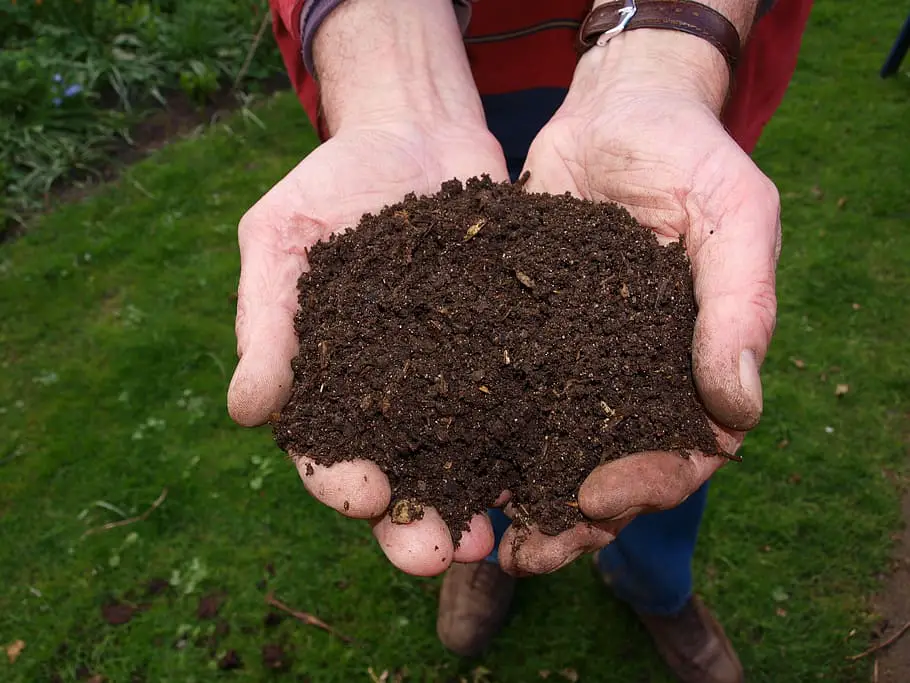
Alright, you’ve done the hard work, you’ve been patient, and now you’ve got a heap of beautiful, nutrient-rich compost.
But what’s next? In this section, we’re going to dive into the exciting world of using your compost.
We’ll explore how this ‘black gold’ can be used to supercharge your garden, giving your plants a gourmet feast that’ll have them growing like never before.
We’ll also touch on how compost can improve your soil structure, making it easier for roots to grow and for water to penetrate.
So, let’s get ready to give your garden a treat it won’t forget!
When is Compost Ready?
Let’s start with a question that’s probably been on your mind: When is my compost ready?
Well, it’s a bit like baking a cake. It needs time and the right conditions.
Your compost is ready when it’s dark, crumbly, and smells like a forest after a rain.
It should be a far cry from the scraps you started with, looking more like rich, fertile soil.
This transformation usually takes anywhere from 2 months to a year, depending on your composting method and materials. So, patience is key here!
How to Use Compost
Now, onto the fun part of using your compost! This nutrient-packed material is a garden’s best friend.
You can mix it into your garden soil or use it as a mulch. When mixed into the soil, it releases nutrients slowly, providing a steady diet for your plants.
As a mulch, it helps retain soil moisture and suppress weeds.
And if you’re into container gardening, compost can be a key ingredient in your potting mix.
Remember, a little goes a long way, so use it sparingly and your plants will thank you!
Troubleshooting Common Composting Problems

Alright, let’s face it. Even with the best intentions, composting can sometimes feel like a tricky puzzle.
But don’t worry, we’ve got you covered in this section about troubleshooting common composting problems.
We’ll be your composting detectives, helping you solve common issues like unpleasant odors, a pile that’s not decomposing, or a compost bin that’s attracting unwanted critters.
With a little know-how and some practical tips, you’ll be able to keep your composting journey on track and your garden thriving.
So, let’s dive in and demystify these composting conundrums together!
Bad Odors
Let’s talk about bad odors, shall we? If your compost pile is smelling less like earth and more like a garbage dump, it’s a sign that something’s not quite right.
But don’t worry, it’s usually an easy fix! Bad odors often come from too many green materials (like food scraps) and not enough brown ones (like leaves or paper).
To fix this, try adding more browns to your pile. Also, make sure your compost is getting enough air.
Turning it regularly can help keep those odors at bay. Remember, a healthy compost pile should smell like a forest floor!
Compost Not Decomposing
Now, if your compost pile seems to be on a permanent pause and isn’t breaking down, there are a few things you can check.
First, is your compost pile too dry? Compost needs moisture to break down, so if it’s too dry, try adding some water.
But be careful not to make it too wet, either! It should feel like a wrung-out sponge.
Second, does your compost pile have a good mix of green and brown materials?
If not, try adding more of what’s missing. Lastly, remember that composting takes time. So, patience is key!
Pests in Compost Bin
Finally, let’s tackle the issue of pests in your compost bin. If you’re finding unwanted guests like rats or raccoons, it’s likely because they’re finding something tasty in your compost.
To deter them, avoid adding things like meat, dairy, or cooked food to your compost.
Also, make sure your compost bin has a lid and is placed in a location that’s not easily accessible to pests.
If you’re composting correctly, your pile should not attract pests.
So, keep these tips in mind, and you’ll be well on your way to a pest-free composting experience!
Composting 101 FAQs
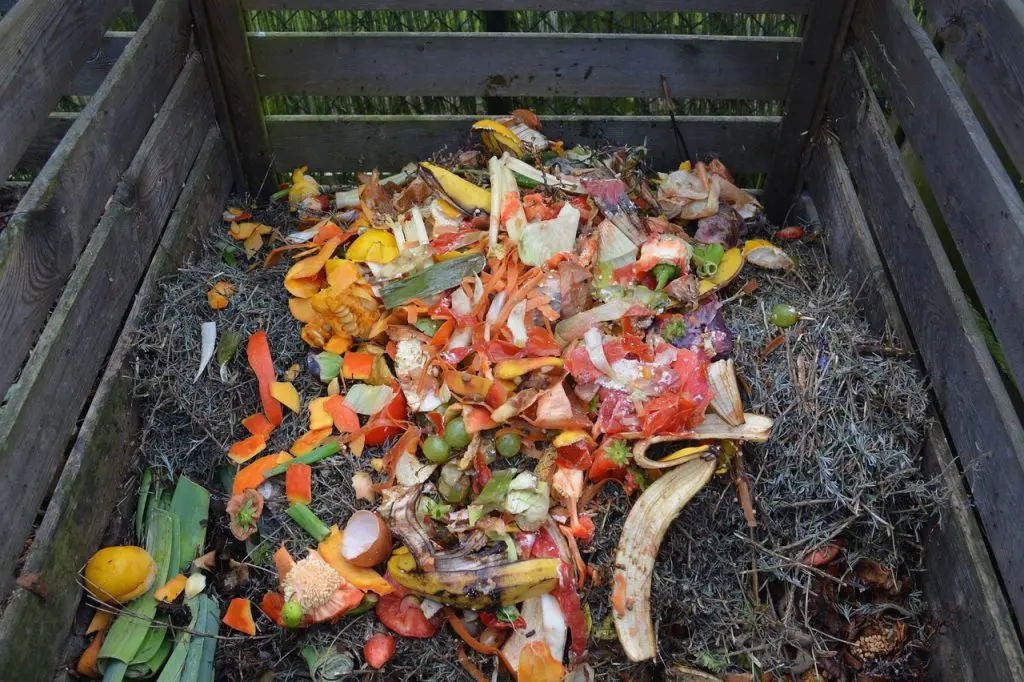
Alright, we’ve covered a lot of ground, haven’t we? But I bet you still have some questions bubbling up.
That’s why we’ve included this FAQ section! Here, we’ll tackle some of the most common questions that come up when people start their composting journey.
From Can I compost this? to Why is my compost pile not heating up?, we’ve got you covered. S
o, let’s dive in and demystify some of those composting conundrums together, shall we?
Q: What can and can’t be composted?
A: Composting is a great way to recycle organic waste.
You can compost a wide variety of materials, including fruit and vegetable scraps, coffee grounds, eggshells, grass clippings, leaves, and even shredded newspaper.
However, not everything belongs in the compost bin. You should avoid composting meat, dairy products, diseased plants, and any materials treated with chemicals.
These items can attract pests or create unpleasant odors.
Q: What types of things can be composted?
A: Composting materials are often categorized into ‘greens’ and ‘browns’. ‘Greens’ are nitrogen-rich materials like vegetable scraps, coffee grounds, and fresh grass clippings.
‘Browns’ are carbon-rich materials like dried leaves, straw, and shredded paper. A balanced mix of these materials will help your compost pile decompose effectively.
Q: What should not be put in compost?
A: While composting is a great way to recycle, some items should not be composted.
These include meat and fish scraps, dairy products, pet waste, diseased plants, and any materials treated with chemicals.
These items can attract pests, spread disease, or introduce harmful substances into your compost.
Always be mindful of what you’re adding to ensure a healthy compost pile.
Composting 101 Final Thoughts
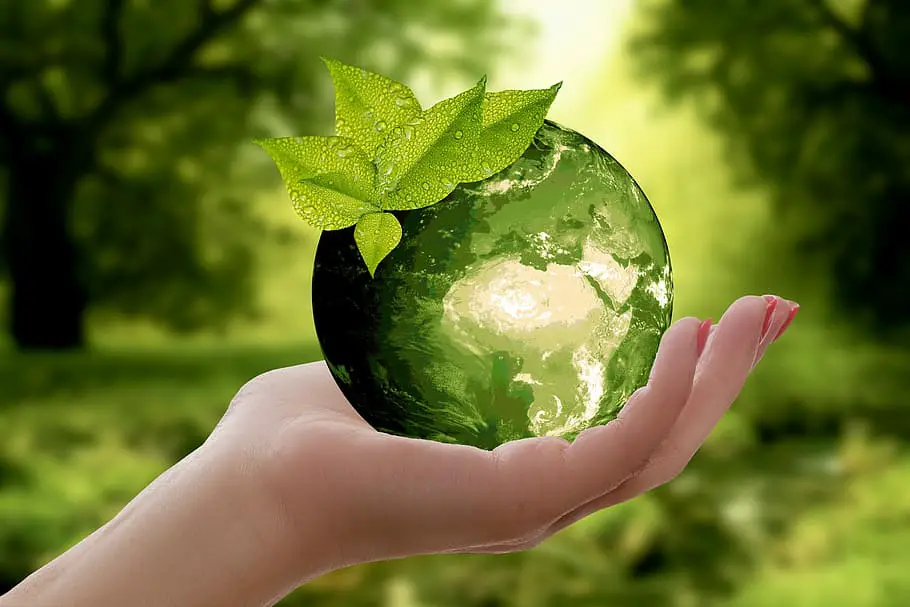
Alright, we’ve journeyed through the wonderful world of composting together, haven’t we?
From understanding what composting is to learning about the process, the benefits, and even how to troubleshoot common issues.
We’ve dug deep into what can be composted and what should be left out.
We’ve explored different methods and how to use the finished product.
Now, as we wrap up, remember that composting is more than just a hobby or a chore.
It’s a small, yet powerful way to contribute to a healthier planet. So, let’s keep turning those scraps into soil gold!
Recap of Composting Basics
We’ve covered a lot of ground, haven’t we? We started with the basics, understanding that composting is a natural process that transforms our kitchen and yard waste into nutrient-rich soil.
We learned about the importance of balancing green and brown materials and the role they play in creating a healthy compost pile.
We also discovered the different methods of composting, each with its unique benefits and considerations.
Encouragement for Sustainable Practices
Now, as we conclude, I want to leave you with a thought. Composting isn’t just about reducing waste or creating nutrient-rich soil for our plants.
It’s about embracing a sustainable lifestyle, one where we give back to the earth as much as we take.
It’s about recognizing our role in the larger ecosystem and making choices that support its health and vitality.
So, whether you’re a seasoned composter or just starting out, remember, every bit of compost you make is a step towards a more sustainable future. Keep going, you’re doing great!




